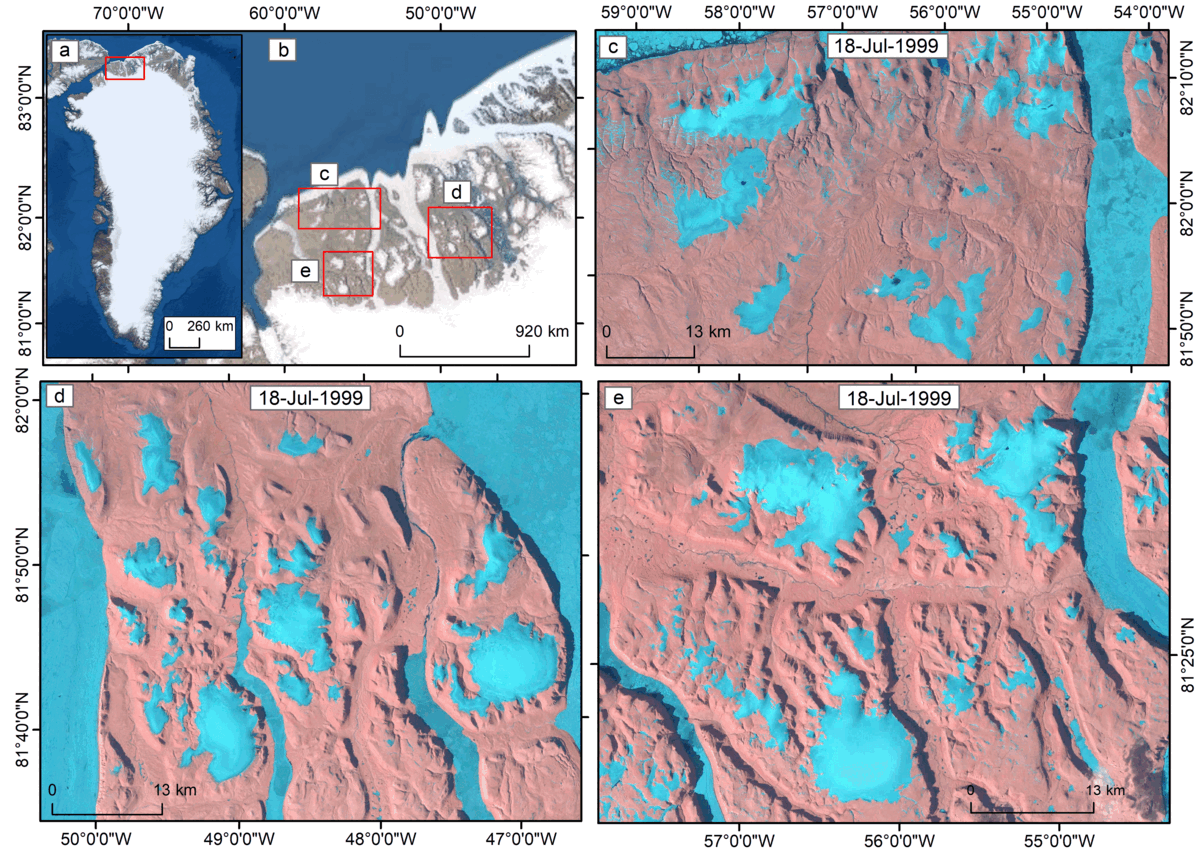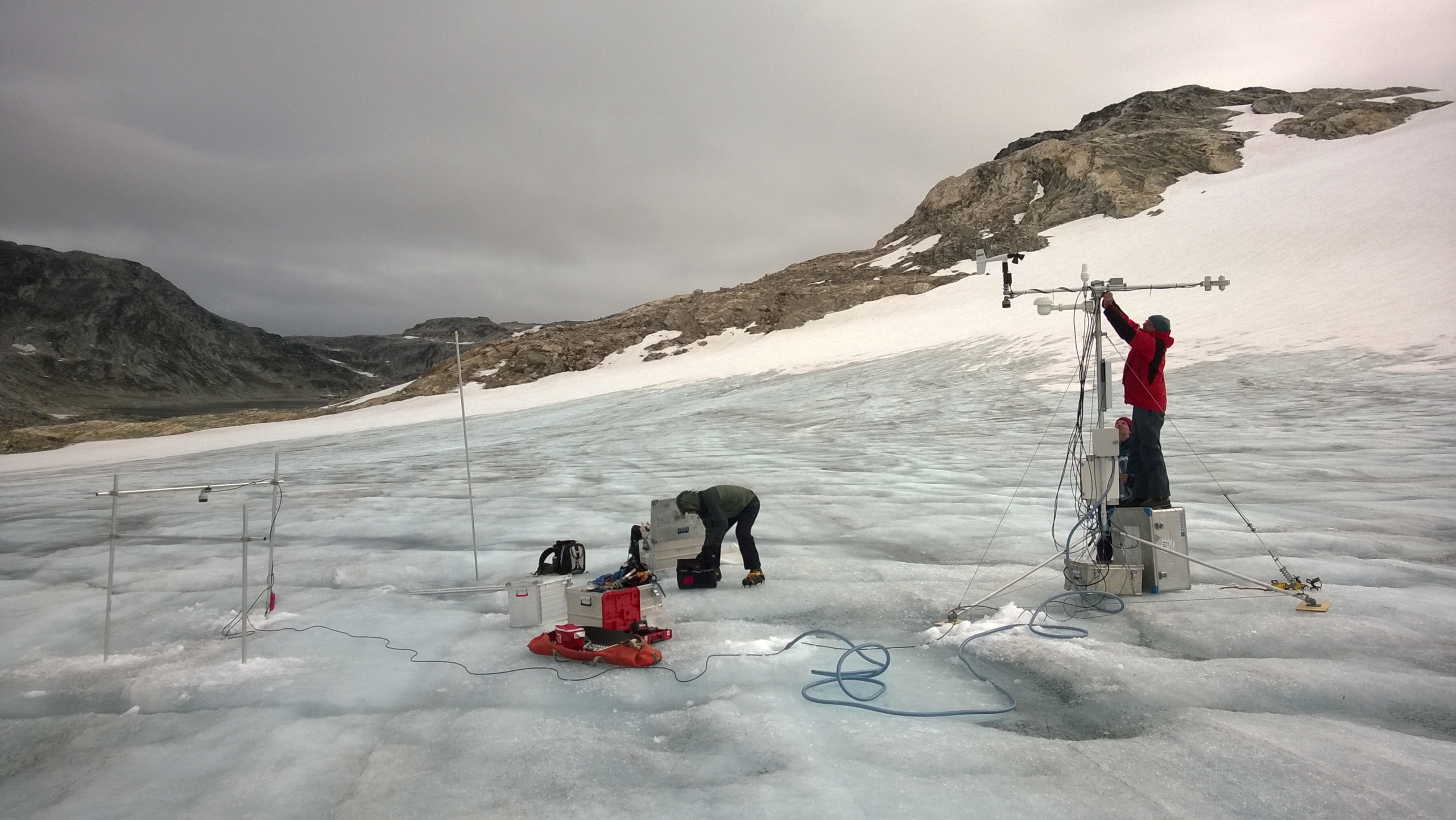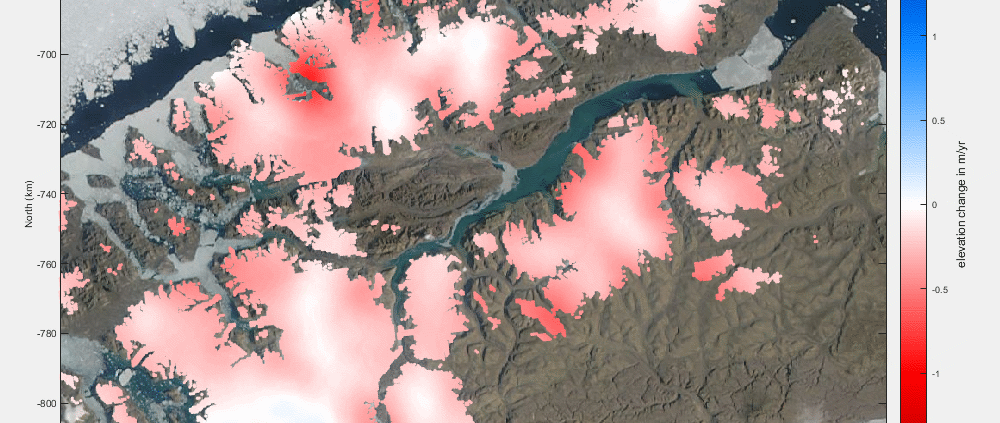A much needed check-in with Greenland’s 20,000 ‘baby glaciers’
Greenland’s many small glaciers are melting at great speed, and the melting is increasing, especially in the Arctic regions where the warming is worst. Now, researchers have studied precisely how much mass these glaciers – not connected to the ice sheet – have lost in recent decades.
In the Arctic, temperatures are rising more than in the rest of the world, and this is causing the northernmost glaciers in Greenland to melt at record speed. This is shown in a new study by researchers from the Geological Survey of Denmark and Greenland (GEUS), DTU Space, NASA Goddard Space Flight Center, Utrecht University, University of Bristol and the University of Copenhagen.
The study focuses on smaller glaciers with no connection to the Greenland Ice Sheet. These peripheral glaciers make up only about four percent of Greenland’s ice-covered areas, corresponding to approximately the same area as Ireland (72,000 km2), but they contribute as much as 11 percent of the total loss of ice from Greenland’s ice-covered areas. Thus, they are a major contributor to global sea level rise.
“The loss of ice from these small glaciers occurs because they are more sensitive to ongoing temperature changes and therefore melt faster than we see in many other places in the Arctic,” says Professor Shfaqat Abbas Khan from DTU Space, who is the lead author of the paper just published in Geophysical Research Letters.
Unstable northern glaciers
The new study shows that the melting of the peripheral glaciers has increased dramatically over the past two decades. On average, 42.3 gigatons (billion tonnes) of ice melted per year from October 2018 to December 2021. In comparison, ‘only’ 27.2 gigatons melted annually in the period February 2003 to October 2009.
“We can see that there is a marked increase in the melting of the glaciers in northern Greenland. This shows that the ice masses in Greenland are very unstable and that they make a considerable contribution to the global sea level rise,” says Professor Shfaqat Abbas Khan.
“It is disturbing, but to be expected, that the northernmost ice sheet on the planet is hit hard by the ongoing temperature rises, because it is evident that the temperature here has also risen the most in the last 20 years.”
The changes have been recorded using altimetry (altitude measurements) with the American satellites ICESat and ICESat-2.

Illustration: Northern isolated glaciers diminishing visibly from July 1999 to July 2919, measured by satellite (Khan et al. 2022)
Variations in melting
Although the isolated glaciers are not part of the Greenland Ice Sheet, it is important to include them in the total melt budget from the Arctic in order to calculate exactly how much the region contributes to sea level rise.
Thus, it is important to keep track of all sources, especially because there are large variations in the melting patterns in different parts of Greenland, says Senior Researcher and co-author of the new study, William Colgan from the National Geological Survey of Denmark and Greenland (GEUS) Department of Glaciology and Climate.
“Many studies have documented the state of the Greenland Ice Sheet over the past decade. But even though the loss of ice from peripheral glaciers is such a large part of Greenland’s total ice loss, there are very few studies documenting the ‘health’ of these peripheral glaciers. In fact, ours is the first altitude measurement of Greenland’s peripheral glaciers with laser satellites since 2013,” he says.

Photo: Maintaining a PROMICE automatic weather station on a small unnamed peripheral glacier in Southwest Greenland, near Nuuk. (W. Colgan/GEUS)
Overall, there is a large net melting of the ice in Greenland as a result of global warming, which is hitting harder here than in other regions of the world. But the picture is very complex and varied, he says:
“There are areas in East Greenland where more precipitation in the form of snow has balanced the ice mass loss, so that it is not nearly as large as in northern Greenland. Areas in East Greenland with mountains of over 2,000 metres have had increased precipitation in high-altitude areas,” says William Colgan.
However, this is offset by the proportionally very heavy melting from the peripheral glaciers in North Greenland in particular. Together, they now lose four times as much mass annually as in 2003, the new study shows.
The work is part of the continuos effort lead by GEUS monitoring the over all response to global climate change from the Arctic ice covers and consequential sea level rise.
Peripheral glaciers
In Greenland, there are many glaciers that are not connected to the Greenland Ice Sheet itself: 20,300 with a minimum area of 0.05 km2. They are found from the southernmost to the northernmost Greenland and range from large ice caps to small cirque glaciers, which are glaciers delimited to a depression in the terrain. All these glaciers have their own mass balance, just as the Greenland Ice Sheet has, i.e. the ratio between melting in summer and snowfall in winter. If the mass loss (melting) is greater than the mass supply (snowfall), the glacier becomes smaller, and vice versa. Compared to the Greenland Ice Sheet, there is relatively little research on the peripheral glaciers.


